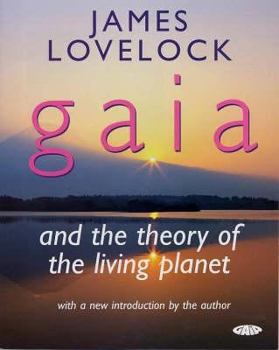Gaia: Medicine for an Ailing Planet
The Gaia hypothesis, first put forth in the mid-1960s, and published in book form in 1975, explores the idea that the life of earth functions as a single organism which actually defines and maintains... This description may be from another edition of this product.
Format:Hardcover
Language:English
ISBN:1856752313
ISBN13:9781856752312
Release Date:January 2005
Publisher:Not Avail
Length:192 Pages
Weight:1.41 lbs.
Customer Reviews
2 ratings
Good, but I do not agree with some points the author made.
Published by Thriftbooks.com User , 18 years ago
The book is quite good and made me aware of planetary processes that I did not know of such as the sulphur cycle with the role of DMS, and in a clear and beautiful way. However, there are some points that I do not agree with him. The most important point that I do not agree is the part on Oxygen, on which the author said the limit of the oxygen concentration in the atmosphere is set at 21% because of fires. He also said that if the concentration of oxygen in the atmosphere is above 25% then "combustion is instant and awesome fires would rage, destroying all forests". Is there any convincing evidence of this claim? I don't see any mentioned in the book except for a brief statement that "An increase of oxygen of more than 1% to 22% (in a submarine), however, cannot be allowed because of the greatly increased risk of fire it would bring". Sorry, but I am not convinced of this, especially from the author. Actually, what was said in the book "Oxygen -- The molecule that made the world" by Nick Lane was quite different. In that book the author claimed that oxygen levels of more than 30% (may be as high as 35%) existed in the Carboniferous period, about 300 million years ago, and he provided detailed arguments and evidence why this might be so. The author also pointed out problems in the "experiments" done by Lovelock and his students to "prove" Lovelock's claim that at no point in the history of the Earth was the oxygen level in the atmosphere higher than 25%. I find Nick Lane's arguments much more convincing, and I am sure Lovelock should have been aware of this work. I would really want to see a reaction from Lovelock to Nick Lane's arguments but unfortunately there is none. He just repeated what he said in his earlier books written during the 1970's. I consider this a flaw. Also, on P.133, he said "the Sun has increased its heat output by 25% from 3.8 billion years ago" while elsewhere he said "the Sun was about 25% less luminous than now 3.8 billion years ago". I am sure everyone with even a rudimentary knowledge of mathematics knows that these two statements are not the same. The first statement means that the Sun's heat output was 1/1.25 = 80% of present 3.8 billion years ago, while the second statement means that the Sun's heat output was 75% of the present 3.8 billion years ago. Quite a huge difference, I would say. Which is true? Another flaw, albeit a minor one in the context of the book. Overall, the book is good and beautifully illustrated. But I cannot give it 5 stars because I believe that some of the arguements were not based on sound evidence, like the oxygen problem.
Nice Presentation
Published by Thriftbooks.com User , 18 years ago
If you're familiar with the Gaia Theory, this book offers little new information; however, if you are just beginning your investigation into this theory of growing popularity, I would highly recommend this work. It is plalinly laid out, and lovingly expounded upon. Lovelock didn't break any records with this literary publication, but he created a lovely springboard work for anyone who is interested in the idea of Earth as a Living Planet.






